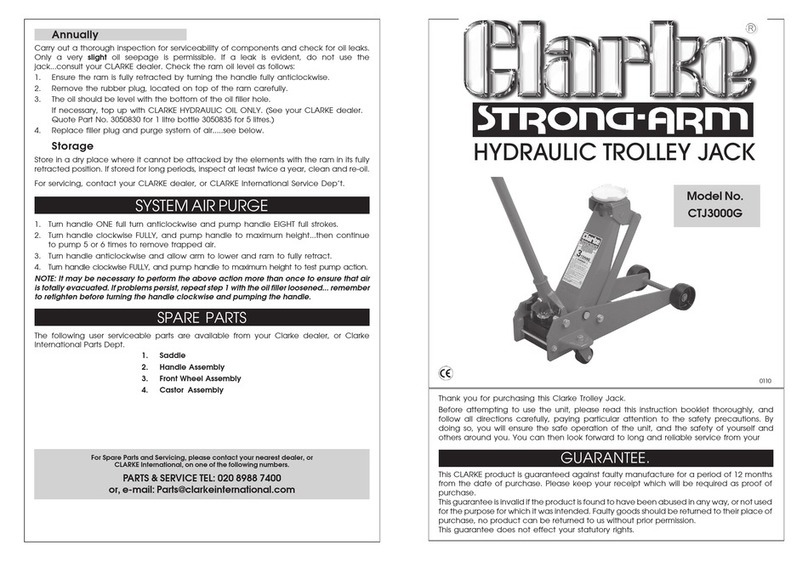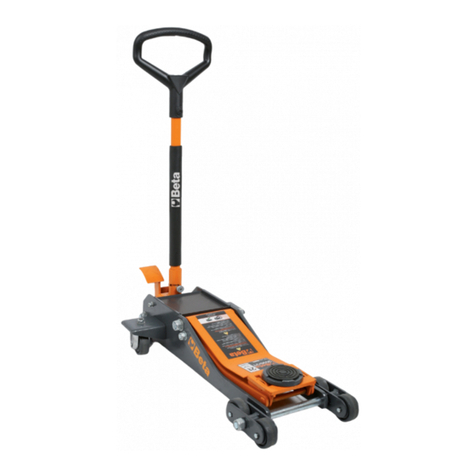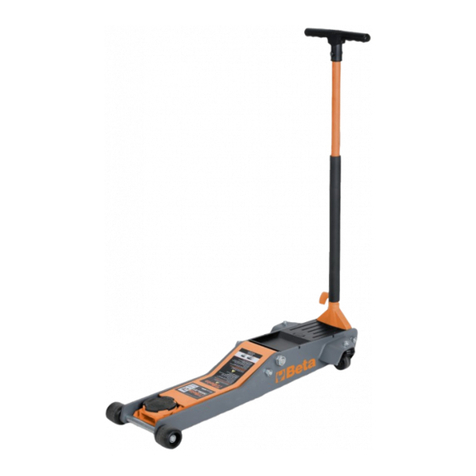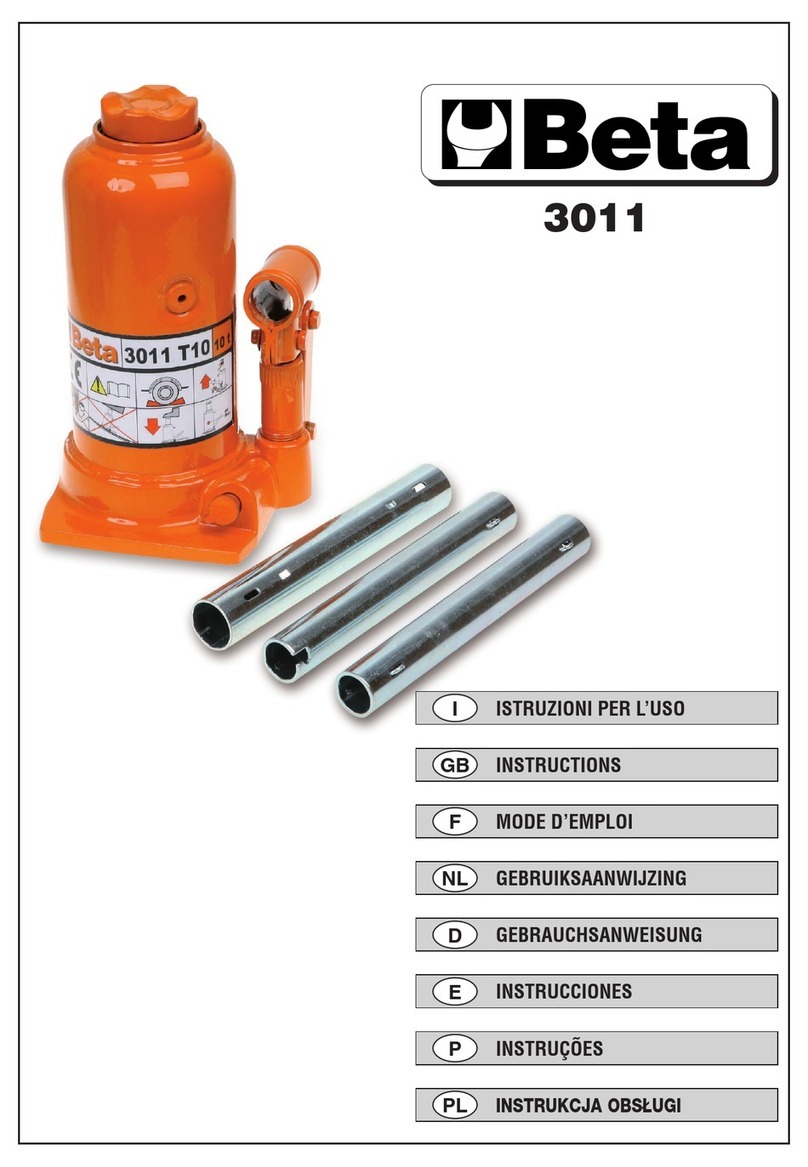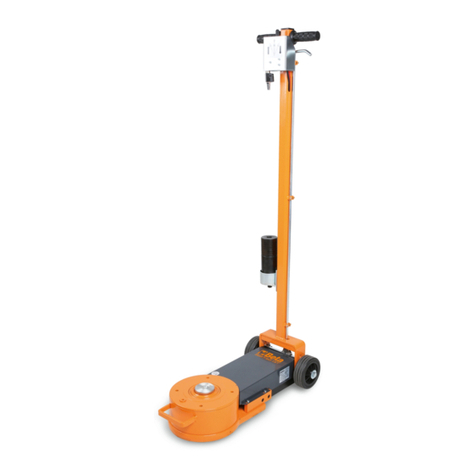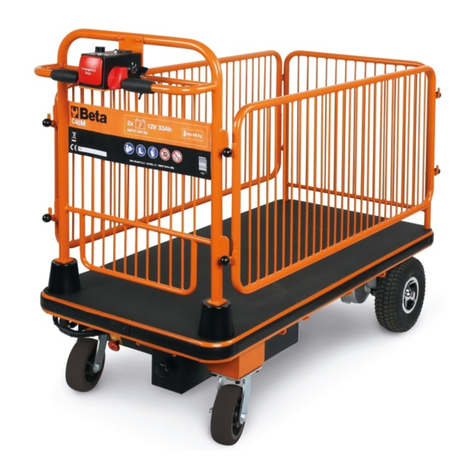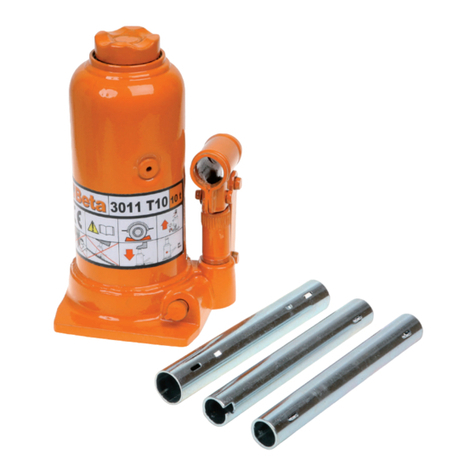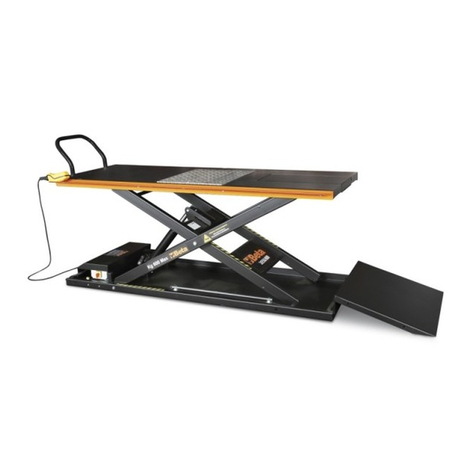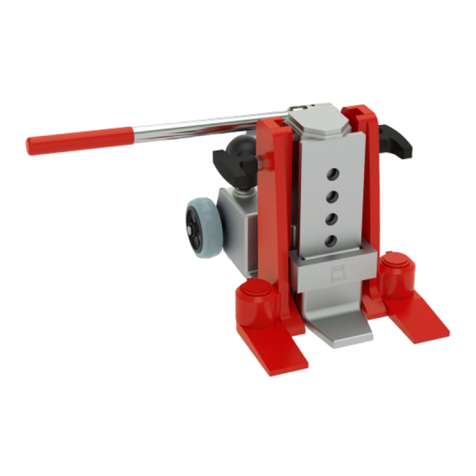
3
ISTRUZIONI PER L’USO I
ART. 3061/2T SOLLEVATORE PNEUMATICO
PREMESSA
Gentile Cliente, prima di utilizzare il sollevatore leggere attentamente le presenti istruzioni e familiarizzare con i
simboli di sicurezza.
- II presente libretto è parte integrante della macchina, deve essere conservato con cura ed essere a
disposizione dell’operatore per ogni ulteriore consultazione.
- I contenuti di questo libretto sono conformi alla Direttiva Macchine 98/37/CEE e omologato secondo la
alcuna, ferme restando le caratteristiche tecniche principali e di sicurezza.
- Il mancato rispetto delle istruzioni contenute in questo manuale può causare lesioni personali anche mortali.
- Il costruttore declina ogni responsabilità di danni, a persone o cose, causati dall’uso errato o improprio del suo
DIS. 1
NORME DI SICUREZZA
- L’uso dell’attrezzatura è consentito esclusivamente a personale autorizzato, che sia a conoscenza del
contenuto del presente libretto di uso e manutenzione.
-Il cricco è esclusivamente uno strumento di sollevamento e non di sostegno, è quindi assolutamente proibito
collocato sugli appositi cavalletti di sostegno. DIS. 2
- Prima di procedere ad una operazione di sollevamento, occorre bloccare l’autoveicolo con il freno di staziona
DIS. 3
- Collocare il sollevatore in modo che il carico sia centrato su di esso e in corrispondenza degli appositi punti di
presa indicati dal costruttore del veicolo. DIS. 4
- Durante le operazioni di sollevamento e di discesa occorre accertarsi che non vi siano persone ed animali sotto
il carico sospeso o nelle vicinanze.
- Non sollevare mai carichi su terreni in pendenza, non piani o cedevoli. DIS. 6
- Fare uso esclusivamente delle prolunghe fornite dal costruttore in dotazione alla macchina. Non fare uso
delle prolunghe senza l’apposito piattello. Non utilizzare mai più di due prolunghe.
- Non sollevare il carico in spazi ristretti per non correre il rischio di intrappolamento.
- E’ vietato utilizzare più sollevatori contemporaneamente sullo stesso carico.
- Non manomettere in alcun caso la valvola di sovrapressione dotata di sigillo di garanzia. DIS. 5


